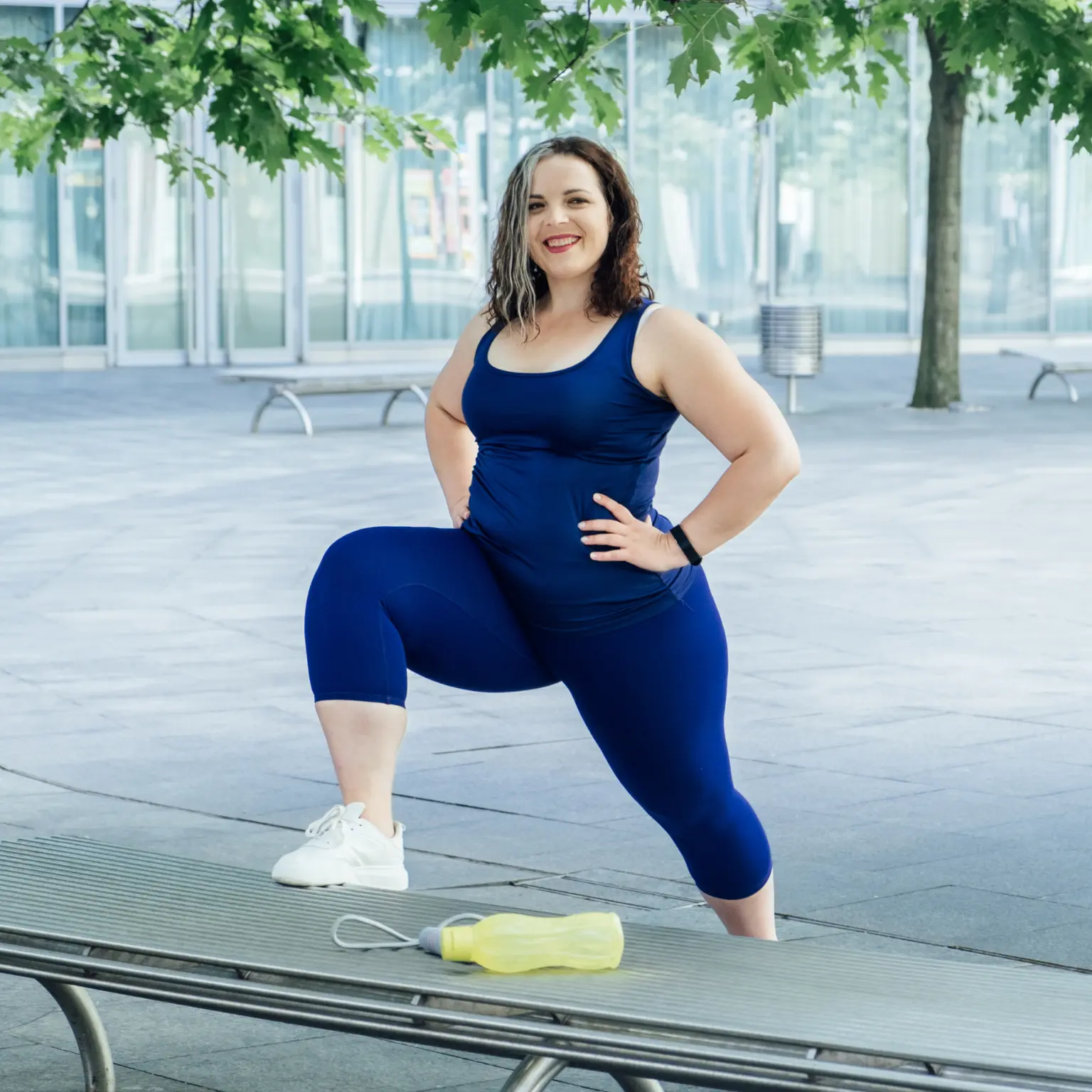How to Create a Personalized Workout Plan for Your Fitness Goals?

Starting a fitness routine can bring a mix of emotions, from anticipation to difficulty. One of the most effective ways to ensure success is by creating a personalized workout plan tailored to your specific fitness goals.
We at Healthy Stride Wellness have brought this insight to help you design a workout regimen that suits your lifestyle, preferences, and objectives. This guide will walk you through the steps of crafting a personalized workout plan, ensuring that you stay motivated and achieve your fitness goals.
Table of Contents
Key Takeaways
- Setting Clear Fitness Goals: Establishing specific, measurable, achievable, relevant, and time-bound (SMART) goals is essential for creating a focused and effective workout plan.
- Choosing the Right Exercises: Selecting exercises that align with your goals, fitness level, and interests will help you stay engaged and make progress.
- Staying Consistent and Motivated: Developing a routine and finding ways to stay motivated are crucial for long-term success in your fitness journey.
Introduction to Personalized Workout Plans
Creating a personalized workout plan involves more than just picking exercises at random. To reach your fitness goals, you need to know what you want, check where you are now in terms of fitness, and create a plan that works for your daily routine. With the right approach, you can create a plan that not only helps you achieve your goals but also keeps you motivated and engaged. Healthy Stride Wellness has brought this insight to guide you through the process.
Step 1: Set Clear Fitness Goals
Goal: Define What You Want to Achieve
- SMART Goals: Establish clear goals that are specific, measurable, achievable, relevant, and time-bound. By setting clear goals, you can stay focused and motivated to accomplish what you aim for. This way, you’ll have a clear direction and the drive to reach your targets.
- Short-Term and Long-Term Goals: Identify both short-term (e.g., losing 5 pounds in a month) and long-term goals (e.g., running a marathon in a year).
- Personal Motivation: Understand why these goals are important to you, whether it’s improving health, gaining strength, or enhancing appearance.
Key Takeaway: Clear, well-defined goals are the foundation of a successful workout plan. They give you direction and help measure your progress over time.
Step 2: Assess Your Current Fitness Level
Goal: Understand Your Starting Point
- Fitness Assessment: Perform basic fitness tests to evaluate your strength, endurance, flexibility, and cardiovascular health.
- Health Considerations: Take into account any medical conditions or physical limitations that may affect your workout plan.
- Baseline Measurements: Record your current weight, body measurements, and fitness test results to track progress.
Key Takeaway: Knowing your starting point helps you create a realistic and achievable workout plan tailored to your current fitness level and health status.
Step 3: Choose the Right Exercises
Goal: Select Exercises That Align with Your Goals and Interests
- Cardiovascular Exercises: Include activities like running, cycling, swimming, or brisk walking to improve heart health and endurance.
- Strength Training: Incorporate weightlifting, bodyweight exercises, or resistance bands to build muscle and increase strength.
- Flexibility and Mobility: Add stretching, yoga, or Pilates to enhance flexibility and prevent injuries.
- Enjoyable Activities: Choose exercises you enjoy to stay motivated and make your workouts more enjoyable.
Key Takeaway: Selecting exercises that you enjoy and that align with your goals increases the likelihood of sticking to your workout plan and achieving your fitness objectives.
Step 4: Create a Workout Schedule
Goal: Develop a Structured Plan
- Frequency: Decide how many days per week you will work out, aiming for at least 3-5 days.
- Duration: Determine the length of each workout session, typically ranging from 30 to 60 minutes.
- Variety: Plan a mix of cardio, strength training, and flexibility exercises throughout the week to prevent boredom and promote balanced fitness.
- Rest Days: Don’t forget to schedule rest days for yourself. This helps your body recover and avoids overtraining.
Key Takeaway: A well-structured workout schedule ensures consistency and helps you balance different types of exercises for overall fitness improvement.
Step 5: Warm-Up and Cool-Down
Goal: Prevent Injuries and Enhance Recovery
- Warm-up: Spend five to ten minutes preparing before your exercise starts. Getting your blood flowing and preparing your muscles for the upcoming workout is important. You can do this by doing light jogging, dynamic stretching, or jumping jacks.
- Cool-Down: End each workout with a 5-10 minute cool-down to gradually lower your heart rate and promote recovery. Examples include static stretching, walking, or yoga poses.
Key Takeaway: Warming up and cooling down are essential components of a workout plan, helping to prevent injuries and improve recovery.
Step 6: Monitor Progress and Adjust
Goal: Keep an eye on how you’re doing and tweak things as needed.
- Progress Tracking: Keep a workout journal or use a fitness app to record your workouts, noting exercises, sets, reps, and any changes in weight or measurements.
- Regular Assessments: Periodically reassess your fitness level and compare it to your baseline measurements to track improvements.
- Adjustments: Modify your workout plan as needed based on your progress, goals, and any feedback from your body. This could include increasing intensity, changing exercises, or adjusting the frequency of workouts.
Key Takeaway: Regularly monitoring your progress and making adjustments ensures that your workout plan remains effective and aligned with your fitness goals.
Step 7: Stay Motivated and Consistent
Goal: Maintain Motivation and Consistency Over Time
- Find a Workout Buddy: Working out with a buddy can make your exercise routines more fun and help you stay committed.
- Set Milestones and Rewards: Establish mini-goals and reward yourself when you achieve them to stay motivated.
- Variety and Fun: Keep your workouts interesting by trying new exercises, joining fitness classes, or participating in sports.
- Mindset and Support: Cultivate a positive mindset and seek support from family, friends, or online communities to stay encouraged.
Key Takeaway: Staying motivated and consistent is crucial for long-term success. Find what keeps you engaged and make fitness a regular part of your lifestyle.
Overall
Creating a personalized workout plan is a powerful tool for achieving your fitness goals. By setting clear objectives, choosing the right exercises, and staying motivated, you can develop a plan that fits your lifestyle and helps you reach your desired outcomes.
Healthy Stride Wellness has brought this insight to guide you on your fitness journey. Start crafting your personalized workout plan today and take the first step toward a healthier, fitter you.
Are you interested in finding out more about staying fit and living healthily? Check out other posts on Healthy Stride Wellness for extra advice and ideas. Become part of our community now to get continuous support and expert tips.
FAQs
How often should I update my workout plan?
It’s a good idea to reassess and update your workout plan every 4-6 weeks to keep it challenging and aligned with your progress.
What if I have a busy schedule and can’t commit to long workouts?
Even short, 15-20 minute workouts can be effective if done consistently. Focus on high-intensity interval training (HIIT) or incorporate physical activity into your daily routine, like taking the stairs or walking during breaks.
Should I consult a professional before starting a workout plan?
It’s always a good idea to consult with a healthcare provider or fitness professional, especially if you have any underlying health conditions or are new to exercise. They can provide personalized advice and ensure your plan is safe and effective.
Please Note: Healthy Stride Wellness provides educational content and is not a replacement for medical advice. Consult a healthcare provider for any health issues.




